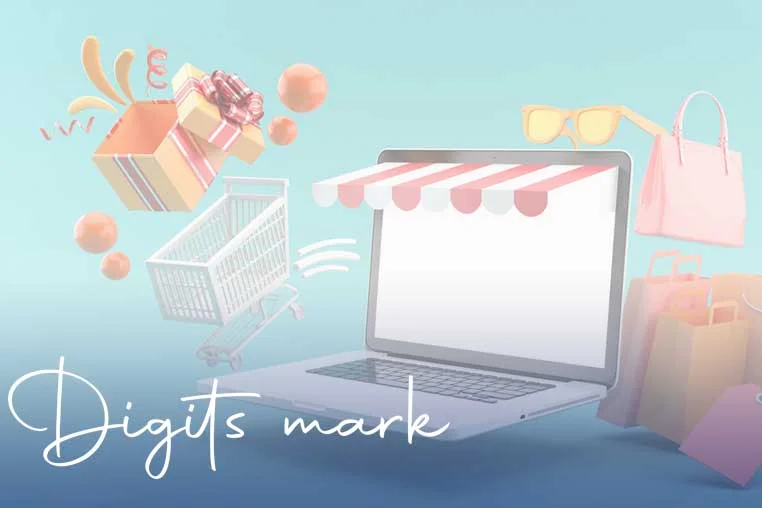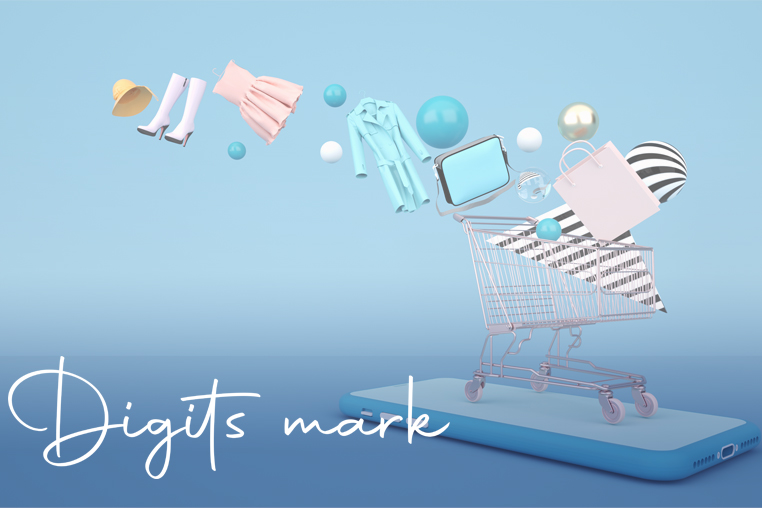Introduction
Beginning in the last third of the last century, the Internet gradually dominated our world, and human inventions flocked to it until we were finally able to facilitate one of the first human interactions in history. It is the process of trade. The ability to buy and sell products has become available to everyone with simple clicks on smart devices through electronic stores. To buy or sell as many products as you want, from groceries to giant machines, you can do it all through what we call e-commerce today
Expansion in the field of e-commerce continues until now, as hundreds of other websites and services have been launched that contribute to improving the experience of trade and purchase. Not to mention the developments that took place in the sites on the previous list, which contributed to making e-commerce one of the most growth areas in the world, with sales exceeding $4 trillion so far, and it is expected to exceed $5 trillion by 2022
Table of contents
What is e-commerce, and what are its types
What is the importance and benefits of e-commerce
What are the advantages of e-commerce
What are the most important stages of the e-commerce process
The Six Stages of the Customer Journey in E-Commerce
What is e-commerce, and what are its types
In the past, life was more difficult, meeting daily needs was not easy at all, and it required a lot of effort and fatigue, but the situation now has become completely changed from what it was, as many of the various developments began to dominate and gradually enter the world until it was able to reach what we are Now, after the tremendous technological development, life has become more smooth and comfortable
E-commerce simply refers to the transactions in which individuals and businesses sell or purchase products over the Internet. E-commerce companies started to emerge in the early nineties. In 1992, (Book Stacks Unlimited) was launched to become the first online marketplace for book trading, initially based on phone calls, then in 1994 it turned into a website. Just a year later, Jeff Bezos launched the famous Amazon store, and Pierre Omidyar followed him with the launch of (AuctionWeb), which is known today as eBay.
And only 3 years after the launch of these electronic stores, what we now know as PayPal, an electronic payment system, was considered the miracle that added the remaining link in the chain of the electronic purchase process, which is the remote payment process. Dozens of global websites and services were launched at the beginning of this century, which contributed to making e-commerce what it is today.
As for the types of electronic commerce in terms of the relationship between the customer and the merchant, it is represented by:
Business to Consumer (B2C)
Business to Business (B2B)
Consumer to Consumer (C2C)
Consumer to Business (C2B)
As for the classification of e-commerce companies according to the supply of products and services, their types can be divided as follows
merchandise sales companies
Service Providers
digital product companies
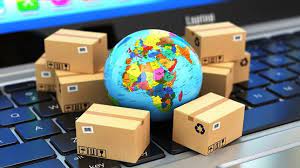
The importance of e-commerce
The importance of electronic commerce stems from the fact that it works on ,You may be interested to see what is the difference between a marketing plan and an advertising campaign
It provides opportunities for many people to work from their homes
It opens the door for people with special needs, retirees and housewives to work in that field, and this has been credited with the process of advancement and development
She had a great advantage in completing many commercial transactions in a short time, at any hour of the day and anywhere
Online communities are created and people have the ability to exchange experiences and views on services or products
Benefits of e-commerce for companies
E-commerce had the greatest credit for expanding the market until it was able to reach it on a global and international scale
It has great credit for providing and reducing the costs of processing, retrieval, distribution and preservation of electronic information.
E-commerce was able to manufacture its products based on the desire and request of the buyer, which made this institution the advantage and distinction among other institutions
E-commerce has reduced the time between obtaining a product or service and paying the money
As for the benefits of e-commerce for society
Reducing traffic congestion and the resulting pollution, because it provides opportunities to complete work from home
Low-income individuals have the ability to find cheap goods that they can buy
People residing in third world countries have the ability to purchase products and merchandise that are not available in their country
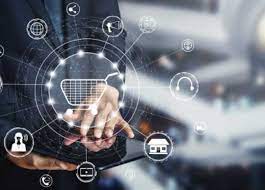
What are the advantages of e-commerce
All information and requirements have become available only with the click of a button without any fatigue or trouble,You may be interested in looking at the 6 most common problems faced by e-marketing
. For example, in the past, commercial transactions needed a lot of fatigue and travel from one place to another to complete them, but at the present time only trade takes place inside the house and without any effort, through E-commerce and now we review the advantages of electronic commerce as it is
Low material cost
Continuous income around the clock
global sales
Ease of displaying the best-selling products
A great place for your introverted clients
Ease of accessing and benefiting from customer data
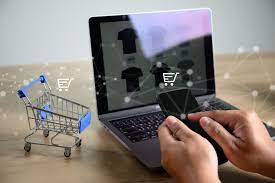
What are the most important stages of the e-commerce process
Along with the explosion of information technology in recent years, e-commerce is becoming increasingly popular. The e-commerce process is implemented in almost every company operating in this field. The stages of e-commerce include the following elements
Marketing stage,You may be interested in seeing the most important features of the art of negotiation in marketing and sales
The purpose of marketing is to target potential buyers, and engage them to enter your site by using online ads, email or creating exhibitions. In addition, companies must also create communities (user groups), forums, conversations, or survey customers through surveys to create customer return
customer stage
Customers are indispensable for e-commerce companies. However, we also need to distinguish between two types of purchases
Business-to-business buying: The buyer is another business that needs to be bought
Buying goods between customers and businesses: The buyer is usually the individual who pays by credit card and sends home goods
The customer visits the site
Once a customer enters your site, the customer sees several products, a product or a service. You can now start tracking and creating profiles for this customer. Based on this information, you can target the products that this customer is most interested in
This is the crucial and important stage in the stages of e-commerce
product display stage
Customers see the product on the website if the item is ordered by category, for easy searching. Once customers are attracted to items for sale or promotions, that's really a potential customer
The stage of adding the product to the basket
On the e-commerce website there is always a shopping cart for customers to shop easily and conveniently. A shopping cart is simply a list of items selected by the buyer, quantity, price, attributes (colors, sizes, etc.) and any other information related to the order
The shopping cart often provides options to clean the cart, delete items, and update quantities
Payment stage
Once the customer has all the items to purchase, he will start the billing process
For the customer-business purchase model, customers usually enter information about shipping and billing addresses
Customers can also add information about greetings, gift packages and other information about affiliated services
Shipping fee stage
Freight charges can be simply understood as charging a full fee or as complex as charging a fee for each item purchased and relating to the part to which the merchandise must be shipped. However, it can be difficult to process international orders that can then be linked to a provider, tracking the goods in transit

Payment stage
After calculating the total value of the items (including tax and shipping) the buyer will provide the payment method
Transaction options will vary
Between customers and businesses usually pay by credit card or post-delivery payment
Between business and business needs all options are available, including orders, quotations and guarantees
For credit cards, there are options for offline or online credit card processing. Online processing on the Internet through the Services is provided by reputable companies
The stage of providing the payment receipt and shipping time
After the order is completed, it may be necessary to send a receipt to the customer. For a business-to-business e-commerce form, the receipt can be a list attached to the order. For customers, the receipt can be a screen reprint of the order or a list sent to the buyer via email. Either way, this process can be easily automated
Request processing stage
If you do not process your credit card automatically, you must first process your financial transactions. Standard business rules govern this step, such as ordering by phone or mail, options can be provided to let customers know the order status, inventory, or item supply status
packaging stage
Once there is a valid request, it must be done. This may be the most difficult stage of work. If you are shopping online, there may be difficulties in taking an inventory. If the purchase is made through the service system, there may be problems with the order fulfillment service system
charging stage
The final stage of the e-commerce process is shipping goods to customers. Can provide order status to clients. In this case, it may include a number of carriers such as UPS or FedEx for customers to track their shipments
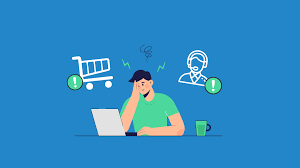
The Six Stages of the Customer Journey in E-Commerce
The e-commerce customer journey includes all the different touch points where the customer interacts with a company, product or brand online. These touch points include marketing, user interfaces, payment, delivery, and the quality of the product itself. By fully understanding your customer journey, it gives online retailers the opportunity to adapt to customer trends and develop a fully tailored service for their customers
Here are the steps that go through the entire ecommerce customer journey and give you the tools to take advantage of this information to grow your business
consciousness,You may be interested in reading about what is an economic feasibility study and its importance
The first stage of the e-commerce customer journey is brand awareness through marketing or word of mouth. Whether consumers are reaching your product through social media, roadside billboards, Google ads, or email, your message should always be clear, consistent and recognizable
consideration
This stage of the e-commerce customer journey revolves around usability and how clearly each product is described. User experience (or user experience) is a vital component of any online store
In the world of e-commerce, competition is fierce, attention span is short and you need to ensure that every customer can navigate your site easily. Just like designing a physical store, the layout of your e-commerce website is very important. Modern customers expect it to be easy to find products in suggested product categories based on search history

Buy
At this point, your customers have already liked your product or service. They loved your brand and were able to easily find the products they wanted. They may have added some extra items to their cart, but it's time to pay now
Similar to the thinking stage, this largely depends on how easy it is for your customers to complete the transaction. Keep the checkout process short and easy to follow, with possible options such as the ability to save card details for future purchases. This is a popular tactic used to encourage customers to come back by making it easier to buy from your site again
Connecting
Now that the batch has been processed, it's time to get the product to your customer as efficiently as possible. This stage is where you gain the trust of your customers
After accepting their payment, you are naturally expected to fulfill the end of the deal. It is important to ensure that the delivery process is clearly planned, and that the order is shipped within a short period after purchase
A good way to help put a customer's mind at ease is to establish information about delivery time, costs, and returns policies from the outset to ensure there is no confusion
Product/Service
This is another integral part of the e-commerce customer journey and one of the most important stages of e-commerce, and will determine how likely the customer is to use your e-commerce site again. The only way to know if you have a really good product is to ask customers directly
Send a follow-up mail after delivery and ask if the product met expectations, whether it was as advertised and whether the product quality met the standards. This will ensure lower returns, lower customer inflation and help you develop new products/services for the next stage of your growth
Fulfillment
One of the most important stages of electronic commerce, without fulfillment, despite achieving a sale, the customer will not buy again. Loyalty is buying from you again and again
Even in this new era of the global internet-based marketplace, loyalty has remained one of the most valuable aspects of customer retention and growth. It's just as important in e-commerce as your local butcher or convenience store. The final stage of the e-commerce customer journey is the culmination of all the experiences so far
Send your customers a short survey to see how likely they are to recommend your product to others and you can even ask them to review/promote your site on social media if they are happy with the service. Build a trusted brand where your customers become your biggest advocates and watch your sales grow
Each stage of the customer journey is an opportunity to interact with customers and ask for feedback
Conclusion
If you want to use any of the professional e-marketing and social media advertising companies, you can contact the digitsmark team
Where we offer you a group of specialists in professional web design services, social media services and many diverse digital marketing services
Hurry up to contact us through our various digital platforms, or visit the digitsmark website on the Internet
Articles you may be interested in reading on our blog
The difference between web applications and websites
What is the concept of Software Maintenance?
The importance of the logo and visual identity
(SEO) and what is its usefulness for your site? What is SEO?
WHAT IS INBOUND MARKETING
The importance of user experience to ranking in search engines



